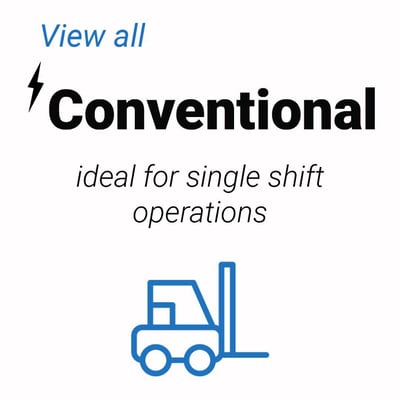
Selecting Forklift Batteries for Performance
When it comes to optimizing your warehouse operations, selecting the right forklift batteries can make all the difference. Whether you're in charge of a bustling distribution center or a small retail hub, understanding how to choose the best batteries is crucial for maximizing performance and efficiency. This guide will delve into the nitty-gritty of forklift batteries, exploring forklift batteries their types, specifications, and maintenance tips to ensure you're making informed decisions.
Understanding Forklift Batteries
Forklift batteries are not just bulky power sources; they are the heartbeat of any electric forklift operation. These batteries come in various types and sizes, each tailored for specific applications. Let's break down the essential aspects to help you understand what you need.
Types of Forklift Batteries
- The most common type used in forklifts.
- Known for their reliability and cost-effectiveness.
- They require regular maintenance, including checking water levels and cleaning terminals.
- Rising in popularity due to their efficiency and low maintenance.
- Offer longer run times and faster charging cycles compared to lead-acid options.
- Higher initial investment but can lead to cost savings over time due to less downtime.
- Less common today but still used in certain applications.
- Known for their ability to perform well in extreme temperatures.
- Require careful handling and disposal due to environmental concerns.
Specifications You Need to Consider
When selecting forklift batteries, it's vital to look at several key specifications:
-
Voltage: Common voltages range from 6V to 80V. Ensure compatibility with your forklift model.
-
Capacity (Ah): This indicates how long a battery can provide power. A higher Ah rating typically means longer operating hours before recharging.
-
Cycle Life: Refers to how many charge/discharge cycles a battery can endure before its capacity significantly diminishes.
-
Size and Weight: Ensure that the battery fits within your forklift's designated compartment while considering weight limitations.
These specifications will guide you 48 volt flat plate forklift batteries toward making an informed choice that aligns with your operational needs.
Selecting Forklift Batteries for Performance
Now that we've laid out the groundwork let's dive deeper into how you can maximize performance through proper battery selection.
Assessing Your Operational Needs
To select the best forklift batteries for performance, start by assessing your operational requirements:
Frequency of Use: How often do you use your forklifts? Heavy daily usage may necessitate a more robust solution like lithium-ion batteries which can handle frequent charges without significant wear.
Operational Environment: Consider whether your operations take place indoors or outdoors, as this affects temperature management and battery longevity.
Weight Capacity Requirements: If you're handling heavy loads regularly, you'll need batteries that offer higher capacity ratings without compromising on safety or efficiency.
Charging Infrastructure: Evaluate your existing charging stations. Does it support quick charging methods? Lithium-ion batteries generally require specialized chargers but offer quicker turnaround times.
Battery Maintenance Tips for Optimal Performance
Once you've selected the appropriate battery type based on your needs, maintaining them is crucial for ensuring long-lasting performance:
-
Regular Inspections: Schedule routine checks on water levels (for lead-acid), terminals, cables, and overall battery condition to catch issues early.
-
Cleaning: Dust and grime can affect performance. Clean terminals with a mixture of baking soda and water when needed, but ensure they’re dry before reconnecting.
-
Proper Charging Practices: Avoid deep discharges whenever possible as it shortens lifespan—aim for partial discharges instead when using lead-acid batteries.
-
Temperature Management: Store batteries in a climate-controlled environment if possible; extreme temperatures can degrade their performance significantly over time.
By following these guidelines, you’ll create an environment conducive to optimal battery performance while reducing potential downtime caused by failures or inefficiencies.
FAQs about Forklift Batteries
1. What type of forklift battery lasts the longest?
Lithium-ion batteries tend to 36 volt flat plate forklift batteries last longer than traditional lead-acid ones due largely to their superior cycle life and faster charging capabilities.
2. How often should I charge my forklift battery?
It's best practice to charge after every shift or when usage reaches around 30% discharge for optimal lifespan—avoid letting it drop too low frequently.
3. Can I switch from lead-acid to lithium-ion batteries?
Yes! However, ensure that your forklifts are compatible with lithium-ion systems before making any changes to your existing setup.

4. What’s the average lifespan of a forklift battery?
Lead-acid batteries typically last between 3-5 years depending on usage patterns; lithium-ion can last upwards of 10 years with proper care.
5. Do I need special training for lithium-ion battery maintenance?
80 volt flat plate forklift batteriesWhile basic knowledge about handling any electrical equipment is helpful, specific training might be required if transitioning from traditional systems due to differences in charging protocols and safety precautions involved.
6. Are there recycling options available for old forklift batteries?
Absolutely! Many manufacturers offer take-back programs or partnerships with recycling facilities specifically designed for disposing of old industrial batteries safely.
Conclusion
Selecting forklift batteries for performance isn't merely an operational choice—it's an investment in productivity that pays dividends over time when done right! By understanding different types of forklift batteries and evaluating your specific needs against available options, you'll set yourself up for success while ensuring maximum uptime and efficiency in your operations.
Incorporating regular maintenance routines will further enhance this investment's longevity while keeping costs manageable over time—a win-win situation! So next time you're contemplating new forklift purchases or updates on existing ones, remember that selecting the right power source is pivotal towards achieving peak operational efficiency!